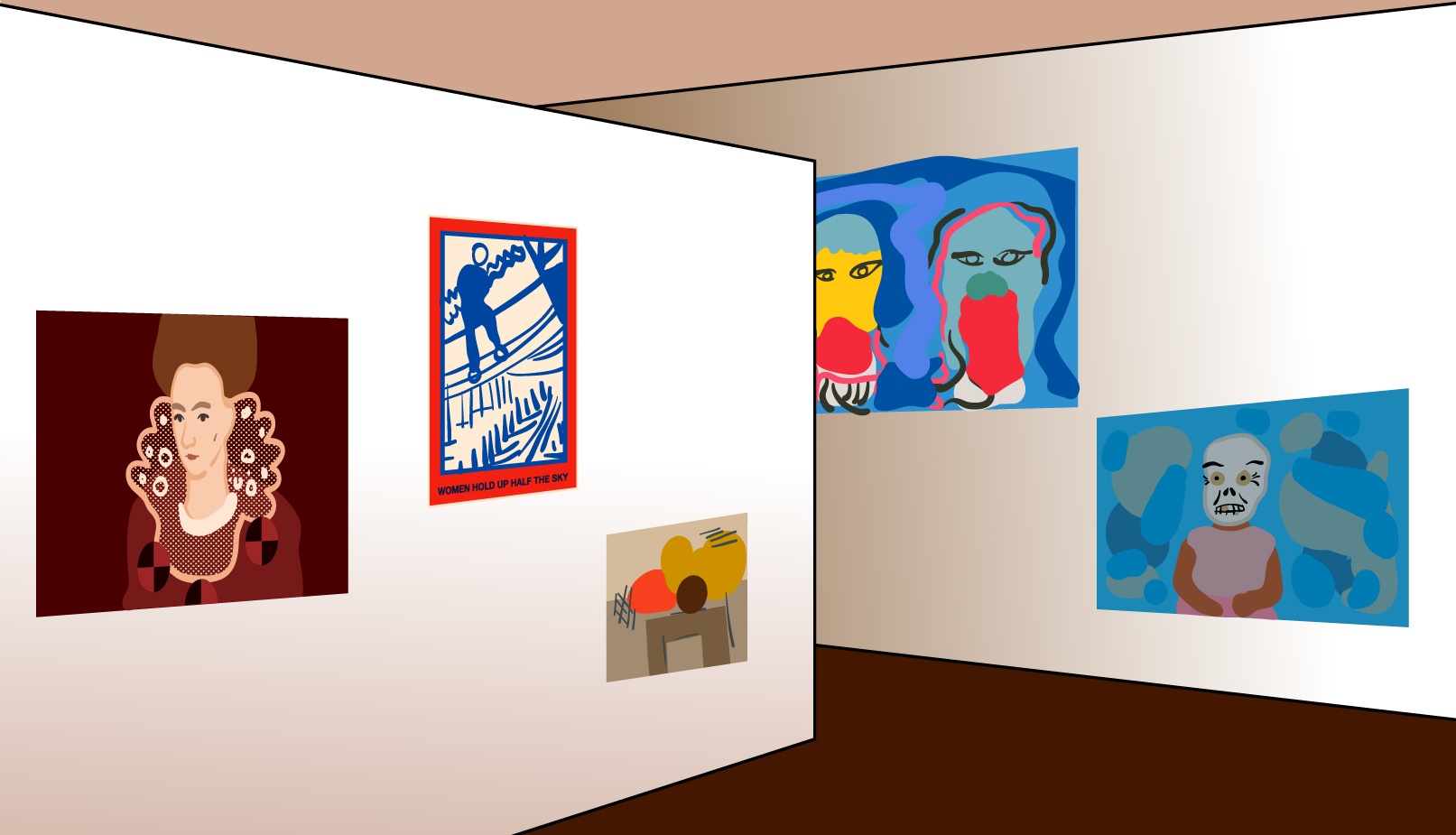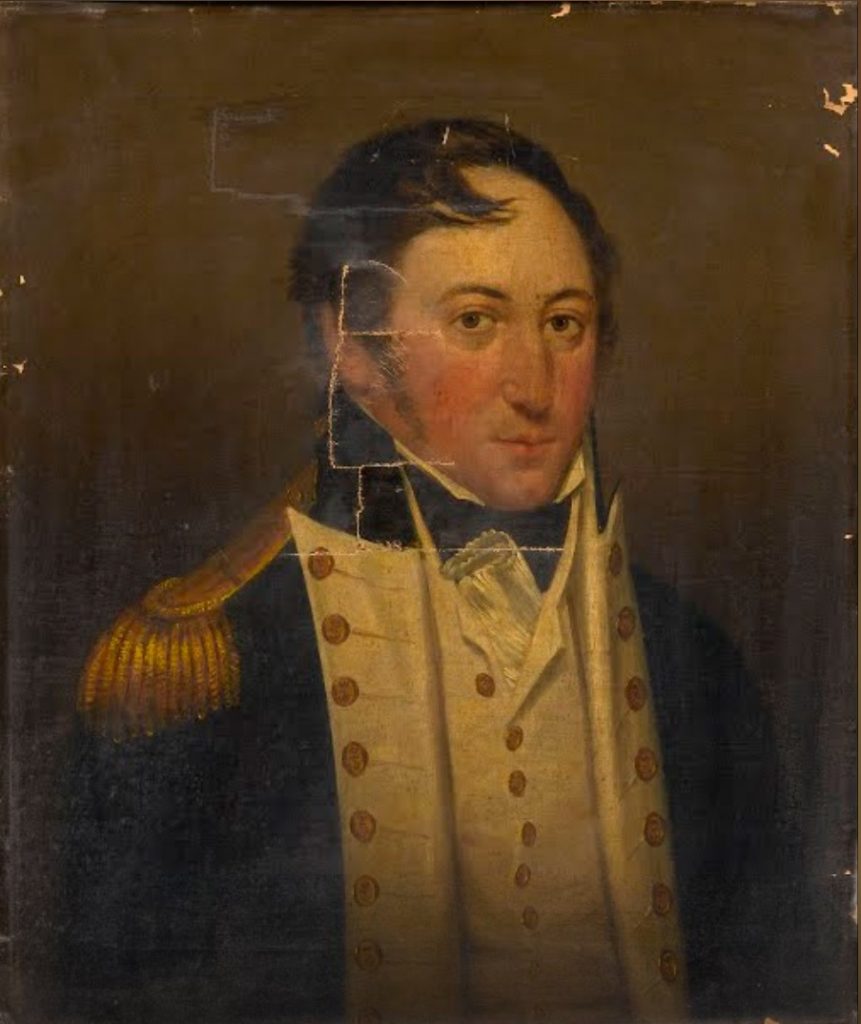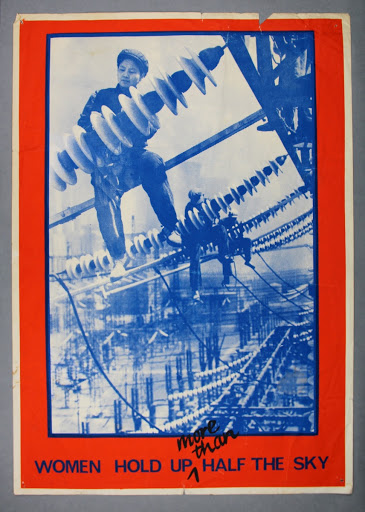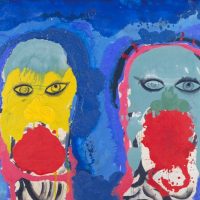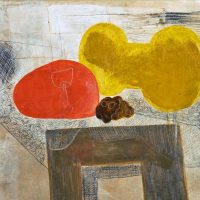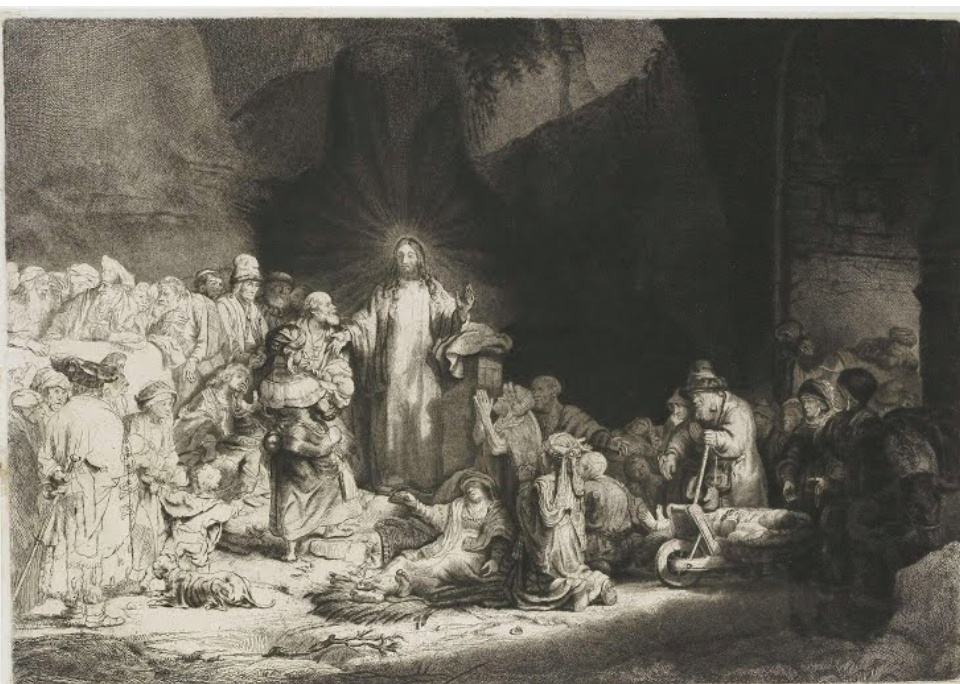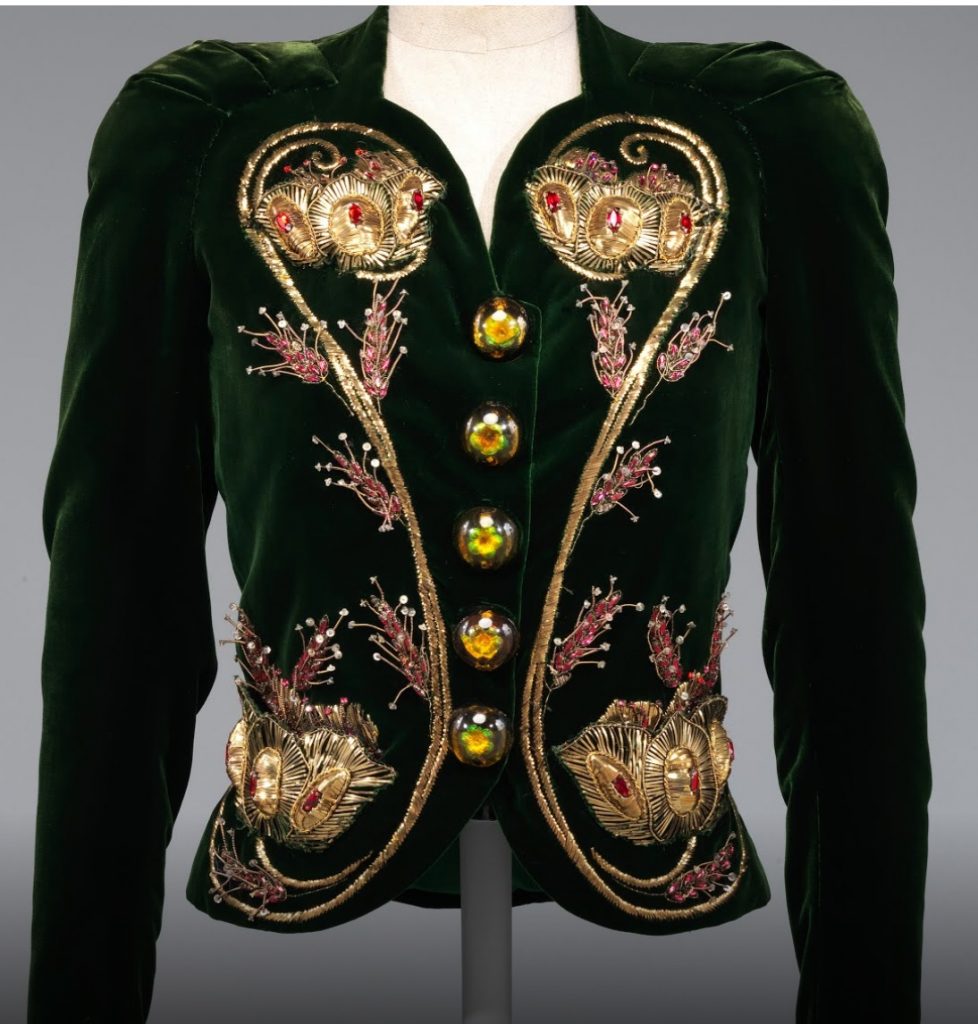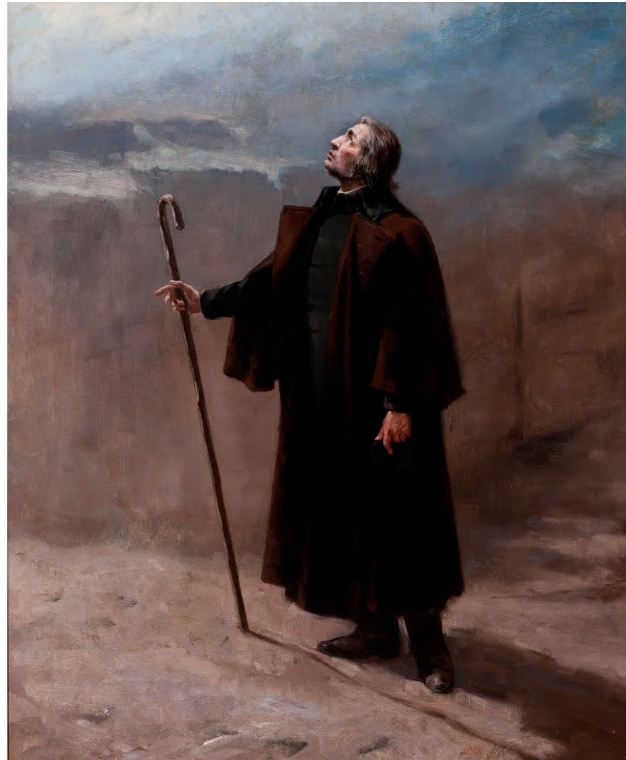Bringing you our favourite online art experiences
What makes a museum experience memorable when… well, when you can’t actually go to the museum? After most institutions closed last month, hundreds of art museums around the globe have made their collections accessible online for free. With the opportunity to browse museums all around the world, how does one choose where to go first?
From the UK to Japan, our staff has compiled a list of our favourite pieces, exhibitions and virtual tours for you to experience. While some choices are based on interest and desire to learn, others are based on memories and personal sentiment. Regardless, read on for some insightful, personable and critical responses to art around the world. Enjoy your time at the Concordian Art Gallery.
The Concordian Art Gallery’s first-ever exhibition investigates the appeal of an artwork through a critical approach. The works, which date from the 19th to the 21st century, depict histories both personal and collective. From the ecclesiastical etchings at the Rijksmuseum to Migishi Kōtarō’s abstract compositions, the featured works draw upon personal experiences to explore our relationship with art. Although eclectic, the ensemble of works invites viewers to reflect on their history and memories and how they interrelate with art.
Matthew Coyte, Managing Editor
Anonymous English School. Commander Robert R. Bastin. Royal Albert Memorial Museum & Art Gallery. Exeter, England.
I picked this museum because it’s one that I’ve had my eye on for a while. My family is originally from Devon, England, so I’ve always wanted to visit, and the Royal Albert Memorial Museum and Art Gallery have been on my mind as well. This painting of a relatively unknown man just connected with me because he looks like my grandfather who passed away this summer. I guess everything just came full circle from my interest in connecting with my family’s roots to this piece.
Lola Cardona, Assistant Video Editor
Women Hold Up More Than Half The Sky. Glasgow Women’s Library. Glasgow, Scotland.
From the online exhibit “Sisterhood is Powerful: UK Posters” at the Glasgow Women’s Library.
I like this piece because of its simplicity, both in its colour and its message. The orange and the blue creates a visually pleasing image and the photograph itself is interesting to look at because of the subject. In it, women are working from extreme heights on what looks like a bridge. The caption “women hold up more than half the sky” seems to be promoting the fact that women work as hard, if not harder than their male counterparts. I see this image as a statement about women in the workforce, in particular, making sure women have equal job opportunities and are recognized for their accomplishments.
Chloë Lalonde, Arts Editor
Masayoshi Nakamura, Man and Woman. 1963. Colour on paper. Nagoya City Art Museum. Nagoya, Japan.
Kōtarō Migishi, Composition: Still Life with Fireplace. 1933. Oil on canvas. Nagoya City Art Museum. Nagoya, Japan.
I initially wanted to do the Hermitage museum in St. Petersburg, but I was so thrown off by the palace and had no attention span for the work it contained. The museum is massive, with three floors of rooms upon rooms and all sorts of halls. It was truly incredible, but no specific artwork caught my eye. But it did spark a desire to be a Russian princess. I realized that I wanted to stumble upon something fresh, something I had no idea existed. I was aware of the Hermitage before this.
I came across the Nagoya City Art Museum (NCAM) on Google Arts & Culture, and its feature image caught my eye. I didn’t recognize the artist, and barely had any idea what it was I was even looking at. Perfect. Turns out it was a Frida Kahlo, Girl with Death Mask. The painting depicts Kahlo’s would-be daughter. I was struck by her white face, full of horror, contrasted with light blues, pastel pinks and Easter yellows.
Among the 50 or so pieces in the NCAM’s collection, two more pieces stood out to me. Masayoshi Nakamura’s Man and Woman (1963) and Kōtarō Migishi’s Composition: Still Life with Fireplace (1933), for two very different reasons.
I immediately felt repelled, but not repulsed, by Nakamura’s painting. The way the paint pools in matte, layered splotches to create the base for the man and woman’s faces immediately reminded me of dried, flaking tempera paint, which gives me this nails-on-a-chalkboard feeling. But the painting itself feels relatable, childlike, as though Nakamura sketched on eyes as a last-minute thought. The swift black ink, like smudged eyeliner, blurs the lines between the man and the woman, and you can only theorize who is whom. My favourite parts are the big blotchy noses. I love the way the paint cakes up to create a shape. While most paint is quite fluid, sometimes it is lumpy, thick or even creamy. This kind of paint allows you to sculpt with it, like scraping plaster onto a wall, smoothing it out in circles to create ridges, keeping each scrape visible. This painting feels distraught, violent. It feels last-minute, not that big of a deal. I like that.
Migishi’s still life is an aesthetic choice. Now, this is the kind of art I’d like to make in isolation. I’m a big fan of line work, big wobbly shapes and juxtaposing neutrals with bright primary colours. I like the hint of recognition—I spy a wine glass, a bunch of grapes and a fireplace— and the rest is up to your imagination.
Cecilia Piga, Assistant Photo Editor
Rembrandt Harmensz. van Rijn, De predikende Christus (De Honderdguldenprent). Rijksmuseum. Amsterdam, Netherlands.
I chose Rijksmuseum because it’s from one of the museums I’m most excited to visit during my exchange in Amsterdam next semester, fingers crossed! I’ve always been intrigued by the tools and process behind etching, so I was drawn to this piece as soon as I recognized the marks on the print. I love the contrast and texture of this printing technique. What I like the most is the intricate level of detail the artists put into a small print.
Lillian Roy, Assistant Life Editor
Elsa Schiaparelli: Jackets. The Metropolitan Museum of Art. New York, United States.
The Metropolitan Museum of Art has a few virtual exhibits available on Google Arts and Culture. Interestingly, a lot of them have to do with the MET’s fashion collections, ranging from late-nineteenth-century footwear to contemporary labels like Comme des Garçons. My favourite collection features vintage dinner jackets designed by Elsa Schiaparelli, an Italian designer who got her start in the early 20th century. I love how the crisp, tailored silhouettes contrast with the elaborate designs and flashy colours, combining elements that are both masculine and feminine. With its jewel tones and stunning embroidery, I found this green jacket to be particularly eye-catching.
Aviva Majerczyk, Copy Editor
Adam Mickiewicz as a Pilgrim, Jan Styka. National Museum. Krakow, Poland.
I chose the National Museum in Krakow because I was supposed to study in the city this summer, before the world as we know it descended into chaos. Additionally, I thought it could be interesting to learn more about my personal Polish heritage. So, I was glad to see that the museum had a large digital collection with many online exhibitions. I chose Independence, a collection of Polish works based on the political notions of 20th-century socialist statesman Józef Piłsudski, which was presented to celebrate the centennial of the independence of the Republic of Poland in 2018. This exhibition is very patriotic in tone, highlighting Poland’s constant struggle against outside occupation. As would be expected from a state-sponsored collection, there were plenty of busts of leaders and paintings of glorious battles. Yet, the piece that struck me most was Adam Mickiewicz as a Pilgrim by Jan Styka. Mickiewicz was a romantic poet and activist in the 19th century, who is often called Poland’s greatest poet. The painting shows Mickiewicz holding a staff and looking up at an ominous cloudy sky. His figure is sharp and detailed against the wash of colour behind him. This piece makes Mickiewicz appear to be almost holy— like a Moses figure. From this, it is obvious that he is greatly revered in Polish history. Overall, Independence was a great gateway to Polish history. It definitely sent me down a few Wikipedia rabbit holes to learn more about the mentioned leaders and uprisings.
Virginie Ann, News Editor
Widad Kawar, TIRAZ. Amman, Jordan.
As I scrolled down the list of virtual exhibits available on Google Arts and Culture, my eyes were caught by the title “home for Arab dress.” It reminded me of my time in Morocco, during Ramadan, when my girlfriends and I went to pick some beautiful traditional caftans. There is something truly simple, yet very graceful, about this type of clothing— which ends up making you feel very elegant. So, I chose to visit the virtual Widad Kawar collection from Tiraz museum in Jordan. The collection contains over 2000 costumes and jewelry, which both hold an important place in Middle Eastern art and history. My favourite exhibition ended up being Ya Hafeth Ya Ameen: Protective silver jewellery from the Middle East, which brings the viewer into Jordan, Palestine, Syria, Lebanon, Iraq, Yemen and Oman. The mix of text, 360-degree photos and the zoom option allows for an immersive experience, which I personally find more interesting than just staring at a computer screen.
Learning history through jewelry is quite unique. The exhibition approaches how conflict, migration and even politics have an influence on dress and jewellery creation. I loved reading about the superstitious meanings of jewelry and their connection with divine and mystical forces through various forms of protection, such as talismans. Our own disconnection, even complete rejection, of religion here in Quebec makes it hard for some people to understand that sense of belief. But, call me naive, I love believing that carrying something such as a piece of jewelry can be meaningful. I think it reinforces a sense of community, an aspect that is greatly present in the Arab world. The most common protection jewelry against the Evil Eye is the Hand of Fatima, dating back thousands of years. Yet, capitalism has transformed it into something you can now purchase in any form, without understanding its background.
As someone who has a strong interest in the history of the Middle East, I was happy to find this short exhibition, which made me calmly travel over the Arabian Peninsula, while sipping on my second Stout during the global pandemic.
“What if in an unsure world – a world in which your family depend on a good harvest for survival, and sickness can easily lead to death – amulets provided a sense of comfort and control, and talismans offered a connection to the mystical powers that seemed to govern your life, but which you can’t always see?” – Tiraz Widad Kawar home for Arab dress
Lorenza Mezzapelle, Assistant Arts Editor
Paul Getty Museum. California, United States.
I spent a good two weeks trying to find a specific artwork that I would want to talk about and share. Ultimately, trying to navigate museums virtually just didn’t cut it for me, as I found it to be much too distracting and too difficult to actually read the accompanying texts. That being said, I was pleasantly surprised at how simple it was to navigate J. Paul Getty Museum’s online platform. They offer a variety of ways to interact with numerous artworks, and rather than offering a virtual tour, viewers can scroll through an exhibition in chronological order, on a webpage. In addition to offering their exhibitions online, the museum has made hundreds of books in their Virtual Library available… for free! From architecture to critical theory, their selection is unparalleled. Some of my favourites included Cezanne in the Studio: Still Life in Watercolors and Otto Wagner: Reflections on the Raiment of Modernity, which I intend on reading in their entirety after handing in my finals.
While most of the exhibitions I scrolled through were interesting, I personally enjoyed Bauhaus: Building the New Artist: it was easy to scroll through, informative and read in the same way as walking through an exhibition space from start to finish. Each part of the exhibition features an interactive exercise, including one based on Kandinsky’s theory that shapes correspond to colour. My favourite part of the exhibition was definitely the “Learning with Albers” segment, which provides a brief, but insightful overview of Josef Albers’ influence on the Bauhaus movement and on studies of materiality. The text is accompanied by annotated notebook pages of various Bauhaus students which illustrate their studies via journal entries and photographs.
Feature graphic by @sundaeghost.
